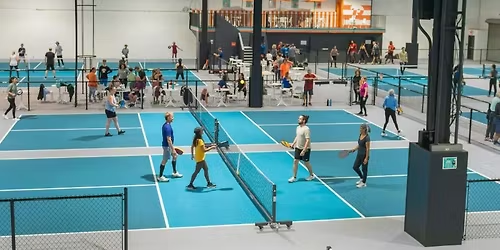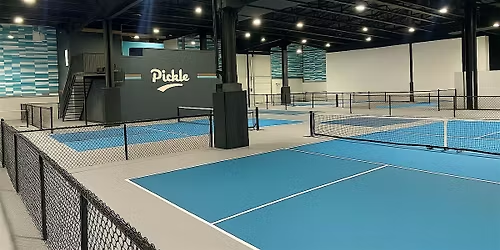Dynamic Systems: Gait, Breath, and the Nervous System in Motion
Schedule
Fri Feb 20 2026 at 08:30 am to 05:00 pm
UTC-05:00Location
Centre St-Pierre | Montréal, QC

About this Event
February 20th and 21th, 2026
8:30 to 17:00 each day
Dynamic Systems: Gait, Breath, and the Nervous System in Motion with Lauren Ohayon
Join Lauren Ohayon for a one-of-a-kind two-day professional training that gives physiotherapists and movement professionals the skills to see, assess, and train movement through the lens of pressure, load, and nervous system state.
Rather than treating isolated dysfunctions, you’ll learn to understand the body as an integrated system, designed for shock absorption, propulsion, force transmission, and pressure regulation.
Across the weekend, we’ll explore:
- How the foot, pelvis, and thorax work together to manage load and motion.
- How breath and rib mechanics organize internal pressure and spinal support.
- How the nervous system shapes tone, coordination, and pelvic floor behavior.
- What to look for in real movement — gait, breath, posture, transition — and what to do next.
- Practical movement assessments and corrective strategies to restore adaptability and ease.
You’ll leave with concrete, clinically relevant movement tools — not just theory. Learn how to watch movement differently, interpret what you see, and choose interventions that address the real problem: how your client manages pressure and load under the influence of state.
When the system can absorb, transmit, and release force efficiently, movement becomes the most powerful treatment tool you have.
This course is for pelvic health physiotherapists, physical therapists, kinesiologists and movement therapits (pilates, yoga).
Dynamic Systems: Gait, Breath, and the Nervous System in Motion with Lauren Ohayon
Lecture 1: Gait: The Body as a Suspension and Recoil System
Core Focus: Reframing gait as a whole-body energy system: how the body absorbs, transmits, and releases load through coordinated motion of the feet, pelvis, spine, and breath.
Key Learning Points:
- Understand gait as a dynamic process of shock absorption, propulsion, and force transmission, not just a sequence of steps.
- Identify how pronation–supination, pelvic rotation, and thoracic counter-rotation express efficiency or compensation.
- Recognize how core stiffness, rib rigidity, and limited hip extension disrupt load transfer and increase pelvic floor strain.
- Learn to observe gait clinically: what to look for, what it means, and how to correct it through movement.
- Apply practical standing, balance, and gait drills to restore adaptability and elasticity through the chain.
Format: Lecture + movement observation + live assessment demo
Lecture 2: Breath, Pressure, and the Spine: The Architecture of Internal Movement
Core Focus: Exploring how the diaphragm, ribs, and thoracic spine coordinate to manage pressure, movement, and pelvic floor function — the body’s internal suspension system.
Key Learning Points:
- Reframe breath as a pressure and movement system, not just air exchange.
- Understand how rib and spinal mobility determine how load and pressure are distributed through the trunk.
- Identify common compensation patterns that alter pelvic floor mechanics.
- Learn to see and assess breath mechanics through posture and motion.
- Use breath-driven movement to restore 3D rib expansion, spinal spring, and pressure regulation.
Format: Lecture + guided breath labs + postural and rib mobility assessment
Lecture 3: Pain and the Nervous System: How State Shapes Pelvic Presentation
Core Focus: Understanding pain as an output of the nervous system and learning to read muscle tone, breath, and behavior as reflections of state rather than dysfunction.
Key Learning Points:
- Explain how pain reflects protection, not just tissue injury.
- Understand the autonomic nervous system (ANS) as part of the peripheral nervous system
- Recognize how breath, tone, and coordination shift with nervous system state.
- Identify protective patterns: gripping, bracing, disconnection as adaptive, not faulty.
- Apply language, pacing, and movement strategies to build safety, down-regulate threat, and restore adaptability.
Format: Lecture + discussion + experiential regulation practice (breath, rhythm, pacing)
Teaching Approach:
Each session blends lecture, movement observation, and guided practical application. Participants will gain both theoretical understanding and real-time clinical skills to assess, interpret, and train movement through the lens of load, pressure, and state.
Bio
Lauren Ohayon is the creator of “Restore Your Core®” (RYC®), a comprehensive and sustainable fitness program that empowers women who aim to be strong, long, mobile and functional.
With more than two decades’ experience as an internationally renowned yoga and pilates instructor, Lauren focuses on resolving core and pelvic floor issues minus the “burn and shred” mentality. RYC® also boasts over 500 highly trained movement teachers around the world.
She is also the co-founder of Body Ready Method® which is rooted in the RYC® Method and offers evidence-based online pregnancy, birth and recovery programs and has trained over 1800 professionals globally.
Lauren and the RYC® teachers help women across the globe gain core strength, achieve ideal pelvic floor function, and learn to move efficiently and exercise optimally.
Politique d'annulation
Important:
Toute annulation engendra des frais de 10% pour frais de gestion.
De plus, les frais Eventbrite ne seront pas remboursés en aucun temps
Advenant une annulation à plus de 30 jours, un remboursement complet sera octroyé (moins les frais mentionnés ci-dessus)après les 30 jours nous accepterons aucun remboursement
*Stationnement($)disponible au Centre Saint-Pierre , des micro-ondes seront à votre dispositon au rez-de-chaussé
Where is it happening?
Centre St-Pierre, 1212 Rue Panet, Montréal, CanadaEvent Location & Nearby Stays:
CAD 987.30




















